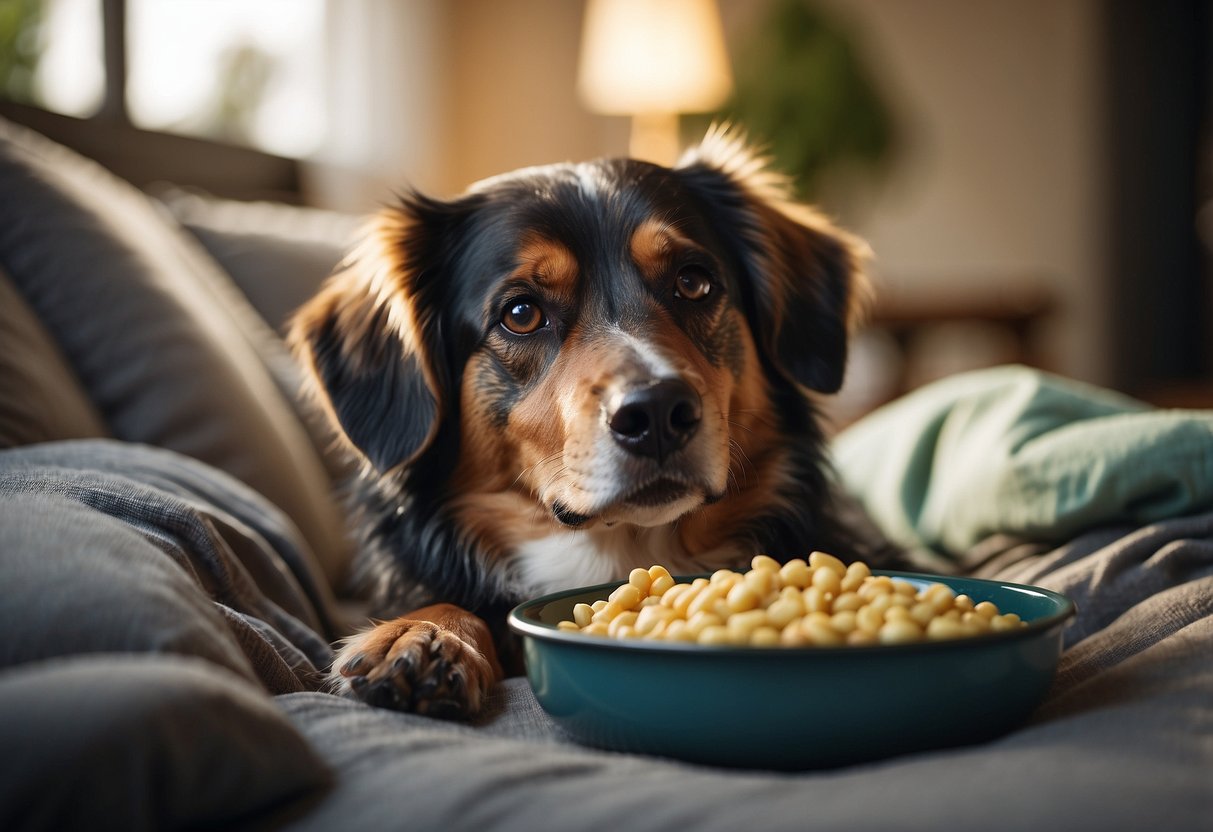
Home Modifications for Accessibility
Adapting your home to suit a senior pet’s needs includes creating accessible spaces. Place beds on lower levels or provide orthopedic pet beds to ease joint pain. Ensure food and water bowls are at a comfortable height to prevent strain.
Consider placing non-slip mats on slippery floors to prevent falls. Accessible litter boxes with low entry points help senior cats. In multi-level homes, confining pets to a single floor where essential items are readily available can reduce stress and physical strain.
Mental Health and Enrichment
Maintaining the mental health and enrichment of senior pets is crucial to their overall well-being, requiring attention to cognitive functions and engaging activities.
Cognitive Dysfunction Syndrome
Cognitive Dysfunction Syndrome (CDS) in senior pets parallels dementia in humans. Symptoms include disorientation, changes in sleeping patterns, and reduced interaction with family members. Early detection is vital for managing CDS.
Veterinarians often recommend dietary supplements and medications tailored to support cognitive function. Regular veterinary check-ups can help monitor progress and adjust treatments. Environmental management, like creating a stable routine and minimizing stressors, also plays an essential role.
Stimulating Activities for Mental Agility
Keeping senior pets mentally active can help slow cognitive decline. Puzzle toys and interactive games are excellent ways to stimulate their minds. Engaging in training sessions that include simple commands can also provide mental exercise.
Daily walks or exploring new environments offer sensory enrichment. Social interactions, whether with other pets or humans, contribute to mental well-being. Tailoring activities to the pet’s physical capabilities ensures they remain safe while staying engaged.
Physical Exercise for Older Pets
Exercise remains essential for senior pets, promoting physical health and mental stimulation. Adjusting routines and mindful limitations can help maintain their quality of life.
Exercise Routines
Exercise for older pets should focus on gentle activities that promote mobility without overstressing joints or muscles. Daily walks provide both physical activity and mental engagement. For dogs, aim for shorter, more frequent walks rather than long, strenuous ones. Incorporate gentle play, including fetching a soft ball or playing with toys in controlled environments.
Cats can benefit from interactive toys such as feather wands, which encourage movement without causing strain. Swimming can be a suitable exercise for dogs, offering low-impact resistance. Always pay attention to their energy levels and watch for signs of fatigue, adjusting routines accordingly.
Limitations and Precautions
Older pets often have specific health issues that require consideration. Arthritis and joint problems are common, so avoid high-impact activities like jumping or running on hard surfaces. Soft, supportive bedding can help alleviate pressure on joints after exercise. Pets with heart conditions may need even gentler exercise, often under veterinary guidance.
Monitor breathing and heart rate during activity, ensuring they are not overstressed. Ensure hydration is maintained, offering water before and after exercise. Since older pets are more susceptible to temperature extremes, exercise should take place during cooler parts of the day. Consult a veterinarian to tailor an exercise plan suited to the pet’s individual health needs.



